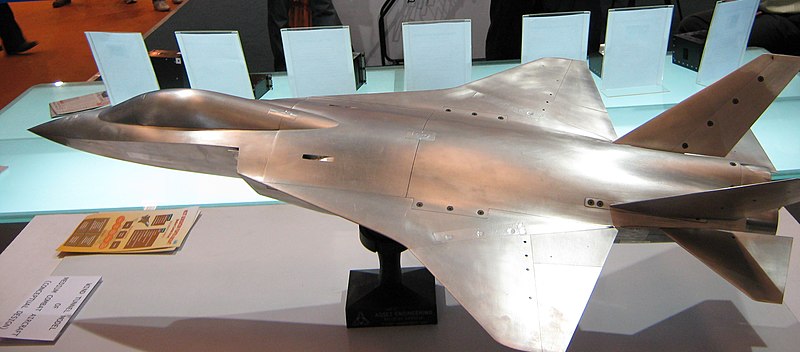
The Advanced Medium Combat Aircraft (AMCA), formerly known as the Medium Combat Aircraft (MCA), is a single-seat, twin-engine fifth-generation stealth multirole fighter being developed by India. It will complement the HAL Tejas, the Sukhoi/HAL FGFA, the Sukhoi Su-30MKI and the as yet undecided MRCA in the Indian Air Force. The main purpose of this aircraft is to replace the aging SEPECAT Jaguar & Dassault Mirage 2000. Unofficial design work on the MCA has been started. A naval version is confirmed as Indian Navy also contributed to the funding. $2 billion funding is set to be allocated over the next three years.Number of AMCA orders are expected to reach 250 units.
Development
In August 2006, India's then defence minister Mr. Pranab Mukherjee announced in Parliament that the government is evaluating experiences gained from the Tejas programme for the MCA.In October 2008, the Indian Air Force asked the Aeronautical Development Agency (ADA) to prepare a detailed project report on the development of a Medium Combat Aircraft (MCA) incorporating stealth features.In February 2009, ADA director P.S Subramanyam said at a Aero-India 2009 seminar, that they are working closely with Indian Air Force to develop a Medium Combat Aircraft. He added that according to the specification provided by the Indian Air Force, it would likely be a twenty ton aircraft powered by two GTX Kaveri engines.
In April 2010, the Indian Air Force issued the Air Staff requirements (ASR) for the AMCA which placed the aircraft in the twenty five ton category.
Design
The AMCA will be designed with a very small radar cross-section and will also feature serpentine shaped air-intakes, internal weapons and the use of composites and other materials.It will be a twin-engined design using the GTX Kaveri engine with thrust vectoring with the possibility of giving the aircraft supercruise capabilities. A wind-tunnel testing model of the MCA airframe was seen at Aero-India 2009.
As well as advanced sensors the aircraft will be equipped with missiles like DRDO Astra and other advanced missiles, stand-off weapons and precision weapons. The aircraft will have the capability to deploy JDAM's. The aircraft will feature Extended detection range and targeting range with the ability to release weapons at supersonic speeds. The aircraft's avionics suite will include AESA radar IRST and appropriate Electronic warfare systems and all aspect missile warning suite.
DARE, Bangalore has appointed a special team to begin identifying avionics and cockpit packages for the first prototype vehicle, and will supply this in published form to the ADA by July 2010. This will include cockpit electronics, cockpit configuration, man-machine interface, mission console systems and computers/software with a focus on data fusion and modular architecture. The LRDE will, in about the same time frame, provide a separate project proposal for an all new radar, to be re-designated for the AMCA, as a derivative of the MMR currently being completed with technology from Israel's ELTA. LRDE will independently look in the market for a partner for active array technology, though it communicated to ADA in June 2009 that it had sufficient R&D available to build a reliable AESA prototype with assistance from Bharat Electronics Ltd and two private firms based in Hyderabad.

No comments:
Post a Comment